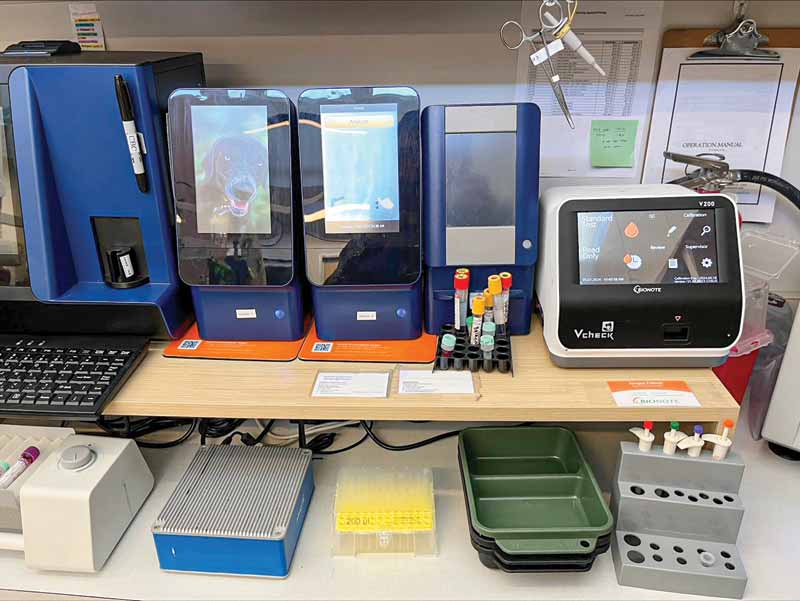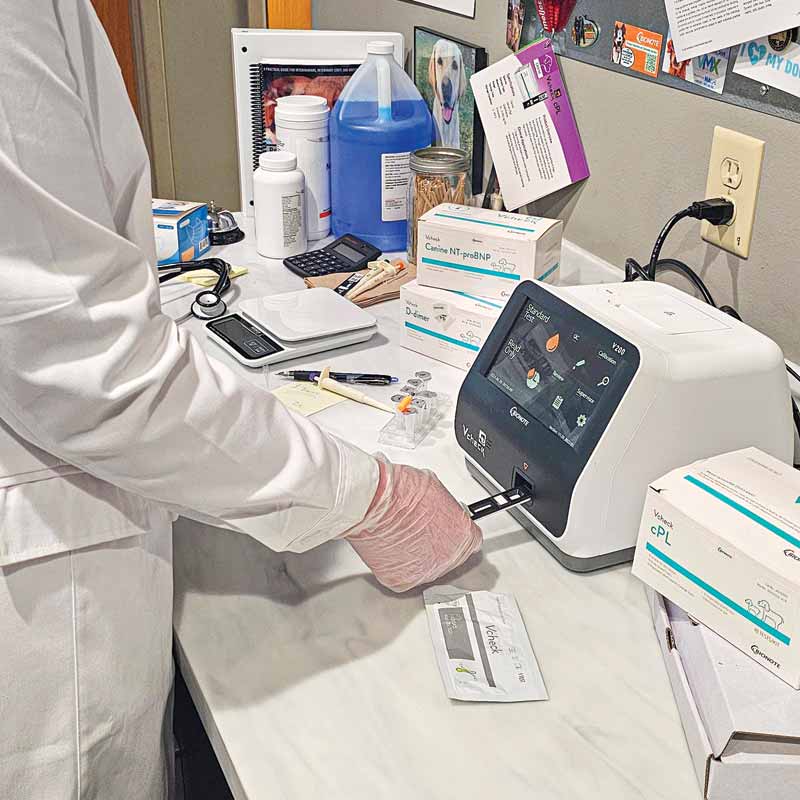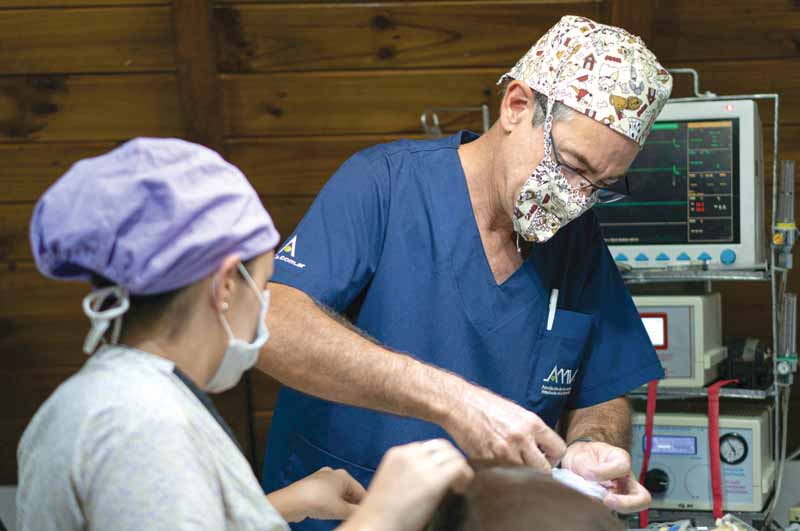
As much as we would like to believe we are in the clear from the COVID-19 pandemic, the impact is still far-reaching and visible in many aspects of our lives. Outside of the infection flare-ups that still occur, secondary symptoms of the global shutdown linger.
One predominant example in the veterinary industry is the ongoing apprehension many clinics have when it comes to evaluating and purchasing new tools and equipment, including automated patient intake platforms, pharmaceuticals, therapeutics, and diagnostic equipment.
This understandable attitude can be traced back to necessary behaviors and trends seen during the pandemic. Still, it also can create an instinct to say no to all new opportunities, even when they could help elevate the practice.
Consistent inconsistency
Unlike many other industries, where the pandemic’s start lowered business activity, the daily lives of those in the veterinary industry were marked by significantly more demand for services. Many Americans who previously felt their schedules and budgets held them back from adding pets to their homes—particularly dogs—were free to do so and willing to invest the time and money to properly care for them. The ensuing major increase in pet ownership and patients also drove profit for veterinary clinics.
However, this revenue boost has proven slightly unsustainable as people return to normal lives. Some clinics still report higher income yearly, but this is due more to higher prices than increased services performed. In fact, an article from the American Veterinary Medical Association (AVMA) reported the number of veterinarian visits has decreased in the past two years.1
Burnout was also already a considerable issue for clinic workers pre-pandemic, making the difficult task of finding and retaining staff members even more challenging. This was only made worse by the increase in patients, as most clinics were unable to hire enough staff to keep up with the high demand. Even as appointments have leveled out, burnout remains for veterinary professionals.
“The COVID clinic experience definitely forced us to do more with less and question our traditional processes,” says Steven Golla, DVM, MS, director of medical operations at Innovetive Petcare.
Ironically, new tools and technologies that emerged during and since the pandemic offer a solution to many of these challenges by reducing workload and the need for “hands-on” staff skills.
Staying above water
With the tumultuous nature of both workload and income, many veterinary workers unsurprisingly went into survival mode during the pandemic. Their focus was majorly, if not entirely, dedicated to the tasks at hand and getting through each day. This left little to no room for anything else. Even if a purchasing decision-maker wanted to look into new equipment possibilities or meet with a salesperson to discuss them, there was not time in the day to get it done.
Post-pandemic, this instinct remains in many clinics. Despite an increase in available time and funds, veterinarians are still heightened in their awareness of their resources, and many are much more conservative about even considering new investments.

The cost of saying ‘no’
As hard as breaking out from the safety net of survival mode can be, it can also be the best move for a clinic. The past four years have seen great advancements in diagnostic equipment, therapeutics and pharmaceuticals that can offer an array of benefits for veterinary practices.
One of the primary concerns standing in the way of clinics acquiring these new options is the return on the initial investment. For many veterinarians, the sticker shock of a price tag can be enough for an immediate “no” on any new product or service. However, it is important to keep in mind the price does not tell the whole financial story.
Many options on the market can add a new service to the clinic, creating a new source of revenue for the practice. Some also offer an in-clinic replacement for existing services that require paying an outside provider a portion of the clinic’s income, saving costs for the practice and the clients. In both cases, the question is not if the acquisition will pay for itself but rather how quickly it will start making more money for the practice.

Make time to save time
Time is also a major consideration for overworked clinic staff, but a new acquisition can also help lessen some of that burden. As technology improves, the in-clinic equipment available to veterinarians becomes more robust and efficient. Certain aspects of the job, such as recording patient data, now have automated solutions. Other time-consuming processes, such as waiting for results from a biomarker test, have been sped up thanks to new products and innovations. Both improvements to clinic efficiency can free up more time for staff members to better attend to patients and avoid burnout. Practice managers should consider new product demos and the free learning opportunities made available by company representatives to obtain information about tools that can help them streamline
their operation.
“With labor challenges, we are constantly looking for ways to improve efficiency by implementing new technologies. Our clinic acquired a new in-clinic diagnostic analyzer that is quantitative and simple to use, provides results in minutes and offers an array of unique diagnostic tests–including some in-clinic industry exclusives,” says Dr. Golla. “This has made our clinic diagnostics more efficient. We no longer need to make follow-up calls regarding these diagnostic tests or delay patient treatment while waiting on test results. This has increased our efficiencies at a time when labor is short and our client volume overwhelming. It also helps the analyzer we purchased is an inflation buster for our clients and clinic—an added bonus. These days it is rare to find a product that gives the client, the patient, and the practice a win.”
Time-saving additions can go from being a helpful tool to a necessity for some clinics, with staffing shortages still disrupting operations. A survey by Brakke Animal Health Consulting cited in the AVMA article states 53 percent of practices still report an unfilled position for a veterinarian, and 63 percent reported job postings for vet techs, with the average time to fill these positions taking 16 and nine months, respectively.1 Technology can be a reliable teammate to pick up the slack on certain services when human help is low.
Technology takeover
With all the benefits technology can have for a veterinary clinic, its impact is unsurprisingly forecasted to become even more important. New and enhanced technologies that emerged or matured during the COVID years continue to change the veterinary landscape–including telehealth, online scheduling applications, patient information management systems (PIMS), wearable devices for animal health monitoring, and even 3D printing of custom orthotics for companion animals.
A Forbes article in early 2024 detailing the emerging trends in pet health care included technology that will “help bridge the veterinary supply and demand gap;” AI tools that will ‘unlock’ better care outcomes and health longevity;” and “next-generation pet owners will drive tech-enabled convenience.”2 These trends highlight not only the capability of technology, but also the demand from customers for the efficiency afforded by high-tech care.
“Along with adding artificial intelligence platforms for record-keeping to our clinic, our biggest technology addition was the quantitative analyzer to complement our in-house diagnostic portfolio. For the first time, we could perform certain diagnostic tests in-clinic, whereas previously, we had to ship those kinds of tests to outside diagnostic labs. Today, our efficiency with diagnosing adrenal, heart and thyroid disease has increased to same-day results, concluding with immediate treatments and client conversations,” says Golla.
The Forbes article adds Gen Z and millennial pet owners are much closer to and more invested in their pets than previous generations.2 Their experience growing up in the digital age has also enhanced their understanding of technology. It has grown the expectation the products and services in their life will be similarly digitized.2 Veterinary clinics looking to attract and retain these clients should prioritize integrating technology into the client experience and patient services.
An investment in new equipment is ultimately an investment in providing a better quality of care to patients, which can transform a practice from surviving to thriving.
Randall Knick, MBA, president of Bionote USA, a medical diagnostics research and development enterprise, has been providing veterinary diagnostic solutions for nearly 30 years throughout the U.S., Latin America, Australia, Canada, and the Caribbean.
References
- https://www.avma.org/news/most-practices-demand-returns-pre-pandemic-levels
- Five Emerging Trends In Pet Health Care For 2024 And Beyond (forbes.com) https://www.forbes.com/sites/forbesbusinesscouncil/2024/01/18/five-emerging-trends-in-pet-health-care-for-2024-and-beyond/
